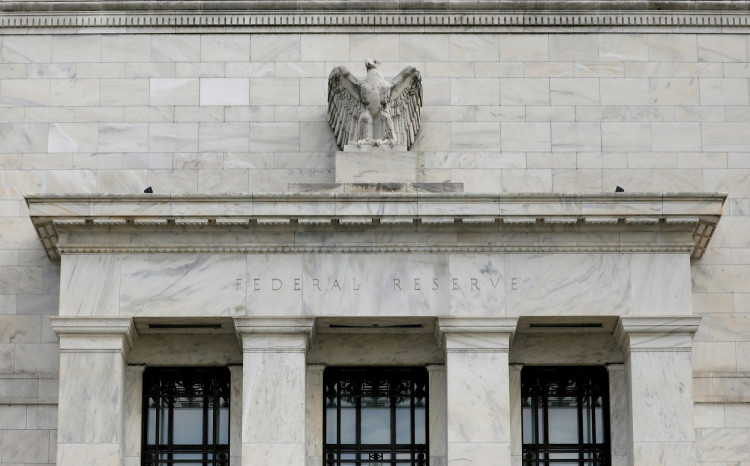The Federal Reserve, in line with market expectations, reinstated its slow interest rate hikes in July after skipping June, creating suspense about the future trajectory of interest rate adjustments.
On Wednesday, July 26, Eastern Time, the Federal Reserve's Federal Open Market Committee (FOMC) announced after their meeting that they had increased the target range for the federal funds rate to 5.25% to 5.50%, a 22-year high, with a hike of 25 basis points, in line with widespread market expectations. Similar to the previous eight meetings since July last year, all FOMC voting members unanimously agreed with this rate decision.
This marks the Fed's resumption of interest rate increases after pausing in June and is the eleventh action in this round of rate hikes. Prior to the pause in June, the Fed had raised interest rates in ten consecutive meetings since March last year. Up until May this year, it had announced 25 basis points rate hikes three times in a row, maintaining the slowest pace of rate increases in this cycle.
Inflation growth, as measured by the U.S. Consumer Price Index (CPI) and Producer Price Index (PPI), slowed down more than expected in June, released two weeks ago. The market generally expected the Fed to continue raising rates by 25 basis points this week. Expectations are growing that the cycle of rate hikes is coming to an end, while prospects for further rate hikes this year after this month are cooling down.
A day before the Fed's decision was announced, tools from the Chicago Mercantile Exchange (CME) showed that the futures market estimated a nearly 99% probability of a 25 basis point rate hike by the Fed on Wednesday, while the aggregate probability of at least one more 25 basis point rate hike by the end of this year after July was less than 37%.
This doesn't align with the rate expectations of Fed officials announced in June. The latest dot plot released by the Fed in June showed that two-thirds of Fed officials expected this year's policy rate to be higher than 5.5%, implying at least two more 25 basis point rate hikes after June within this year.
Journalist Nick Timiraos, regarded as the "mouthpiece of the Fed" and known as the "new Fed news agency", wrote on Monday that the Fed was not ready to declare victory over inflation, the future path of monetary policy is uncertain, some Fed officials and economists worry that easing inflation is temporary, while other economists believe that the current rate hike is sufficient, and further rate hikes may cause unnecessary harm to the U.S. economy.
On Tuesday, Timiraos stated that the Fed was likely to raise interest rates by 25 basis points and investors expected this to be the last hike in this cycle, but strong economic growth might not allow Fed officials to confirm these investor expectations as accurate.
Some economists believe that a few months of weak inflation data are not enough to convince the Fed that it has successfully lowered inflation, and they will definitely remain cautious, keeping all options open. Some economists believe that recent economic data seems to have increased the chances of a soft landing, the Fed is unlikely to disrupt this situation, and Fed Chairman Jerome Powell will likely adopt a wait-and-see attitude, possibly suggesting that September will be like June, skipping a rate hike and remaining on hold.
Continuing to Evaluate New Information and its Impact on Monetary Policy
Compared to the statement from the last meeting in June, the most important change in the Fed's post-meeting statement this time appeared in the interest rate forward guidance.
The previous statement added a line stating that maintaining interest rates was to allow the Fed's FOMC "to evaluate more information and its impact on monetary policy". This statement deleted that sentence and added a new one:
The (FOMC) Committee will continue to evaluate new information and its impact on monetary policy.
Immediately after this sentence, the Fed reiterated the wording from June: "In determining the timing and size of future adjustments to the target range for the federal funds rate, the Committee will assess realized and expected economic conditions relative to its maximum employment objective and its symmetric 2 percent inflation objective."
Continuing to Affirm the Resilience of the U.S. Banking System, Uncertain Impact of Tightening Credit Environment on Inflation
The statement's evaluation of the U.S. banking system was completely the same as the rhetoric from the previous two meetings.
First, the statement continues to reiterate the March wording that "the U.S. banking system is robust and resilient." Then, it reiterated what was said in May and June: "Tighter credit conditions for households and businesses could put pressure on economic activity, employment, and inflation. The extent of these effects is uncertain."
##Continuing to Highly Focus on Inflation Risk, Inflation Remains High, Economic Activity Continues to Expand Mildly
This statement continues to reiterate the additional wording from the May statement last year, namely the FOMC "remains highly focused on inflation risk."
When evaluating the economy, the statement continues to retain the May wording that "job growth has been strong in recent months, and the unemployment rate remains low. Inflation remains high."
There was a slight modification: the June statement said "recent indicators show that economic activity continues to expand at a moderate pace", this time it said "recent indicators show that economic activity has been expanding at a moderate pace."






